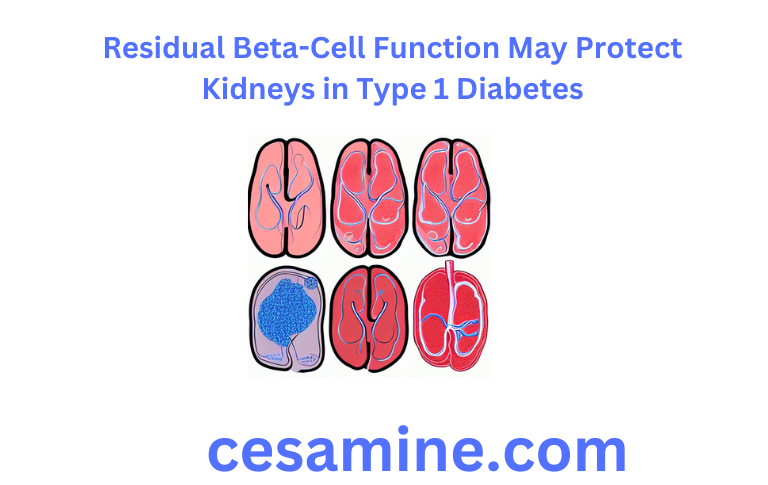The research addressed in this summary was preprinted and published in Research Square; it has not yet undergone peer review.
Main Points
More than 3 years after being diagnosed, more than two thirds of Brazilian study participants with childhood-onset type 1 diabetes still retained some detectable C-peptide function.
Regardless of A1c or the length of the diabetes, even this barely detectable C-peptide level proved to guard against albuminuria.
Why It’s Important
- Uncertainty exists regarding the connection between chronic diabetes problems and residual beta-cell activity.
- Cross-sectional observational study with 138 persons (58.7% of whom are men) who have had type 1 diabetes for three years or more.
- The average age at type 1 diabetes diagnosis was 9, the median age at study initiation was 26, the average duration of the disease was 17, and the average A1c value was 67 mmol/mol (8.3%).
- Clinical parameters, metabolic parameters, and microvascular consequences were compared between 40.6% of participants with no detectable C-peptide ( 1.15 pmol/L; FCP-) and 59.4% of participants with some detectable C-peptide (classified as ultra-sensitive fasting serum C-peptide > 1.15 pmol/L; FCP+).

Key Outcomes
- 19.6% of all patients had nephropathy, with 13.4% having FCP+ and 28.6% having FCP- (P =.03).
- Neuropathy (2.9% total, 2.4% FCP+, 3.6% FCP-; P = 1.0) and retinopathy (3.6% total, 2.4% FCP+, 5.4% FCP-; P =.3) did not differ significantly from one another.
- FCP+ and age at type 1 diabetes diagnosis were significantly correlated positively (P =.039), while the illness duration was significantly correlated negatively (P =.002).
- The chances of having FCP+ at 5, 10, and 20 years after being diagnosed with type 1 diabetes were, respectively, 75%, 64.5%, and 50%.
- An additional year of diabetes was associated with an 8% decrease in the likelihood of having FCP+ (odds ratio, 0.92).
- After adjusting for confounders, individuals who were FCP+ compared to those who were FCP- had a decreased prevalence of albuminuria (13.4% vs 28.6%; P =.031).
- Participants without nephropathy had a 2.5-fold higher likelihood of being FCP+ than participants with the condition.
Limitations
- limited sample size
- data cross-sectional.
- FCP is used instead of stimulated C-peptide.
- Low frequency of persistent complications